Best French Flowers s’il vous plaît! If you can’t visit France, bring it to your garden with these quintessential blooms!
French fries, French kisses, French perfume—how about another one for the list? Best French Flowers! Slip on your beret, and let’s go on an adventure florale through your backyard!
Best French Flowers
1. Iris

Botanical Name: Iris germanica
The iconic fleur-de-lis has been the official emblem of the French royal family since the 12th century! Although it translates to “flower of the lily,” the French national flower is indeed the sweet iris, a paler shade of purple than most other varieties.
Typically, iris flowers are fragrant fan-like blooms appearing from late spring to early summer. The petals are velvety and rippled and come in shades of purple, blue, and even white and gold.
2. French Rose

Botanical Name: Rosa Gallica
The classic French Rose must have inspired the famous French saying la vie en rose (life in pink) with its dreamy scent and soft petals. Each flower may have more than five petals with double corollas. Featuring petite, different-sized blooms, they emerge in a gamut of pinks, including deep, bright, pastel, and shades of lavender and peach.
French Rose thrives in full sun and soil in organic matter. This old heirloom cultivar flowers profusely through summer and spring and continues modestly through fall and winter.
3. French Lavender
Botanical Name: Lavandula dentata
French Lavender, a crucial ingredient in many soaps and perfumes, is known for its pleasant fragrance and ruffled purple blooms. Typically flowering year-round, it blooms from spring to fall in frosty weather. Unlike its English cousin, it produces “rabbit ears” atop the flower spike and has a milder scent.
This sun-loving herb thrives in nutrient-poor, fast-draining, alkaline soil and is easy to care for. Check out our article on How to Grow Lavender for more.
4. Poppies
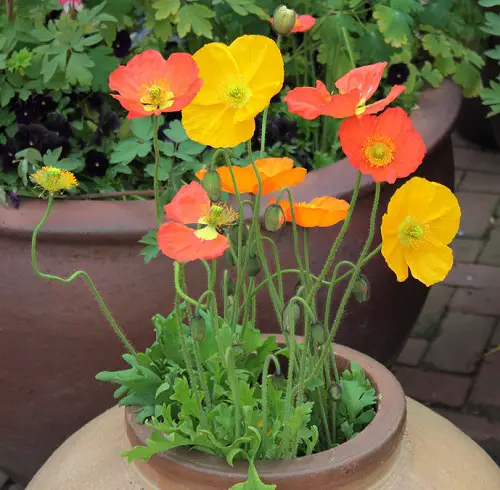
Botanical Name: Papaver rhoeas
The common poppy is a symbol of remembrance for French martyrs of WWI. It is found across a range of habitats, including meadows, roadsides, fields, and disturbed areas. The flowers of this self-seeder are papery and light, creating blankets of red, pink, orange, and white.
Easy to grow, these beloved French wildlings can be sown directly in the ground during fall or spring to produce copious amounts of blooms in the upcoming seasons. They prefer full to partial sun and well-drained soil.
5. Hydrangeas

Botanical Name: Hydrangea macrophylla
Native to Japan, this deciduous shrub was quickly adopted by the French for its showy, large flowerheads in blue, purple, and pink. Often used in French landscaping and floral displays, there are plant nurseries in France dedicated to cultivating new varieties of this flower.
Preferring slightly acidic soil, here’s a quick guide to growing hydrangeas.
6. Dahlias

Botanical Name: Dahlia spp.
Originally from Mexico, these flowers became a European import after the Spanish conquest. Now, this flowering species is hugely popular amongst French gardeners and landscapers for its enormous flowerheads comprising disc florets with symmetrical petals encircling them.
Blooming from summer to fall, they come in nearly all hues except a true blue and even appear as multi-colored patterns.
7. Asters
Botanical Name: Aster spp.
In France, asters (stars) are one of the harbingers of autumn, with their bright, abundant flowers and bushy plants. They feature clusters of upturned daisy-like blooms in shades of purple, pink, white, lavender, and blue, with popping yellow centers. They are used for celebrations like weddings and to pay respect to fallen French soldiers.
Asters bloom in late summer and fall. They prefer full sun to partial shade and slightly acidic, well-draining soil.
8. Tulips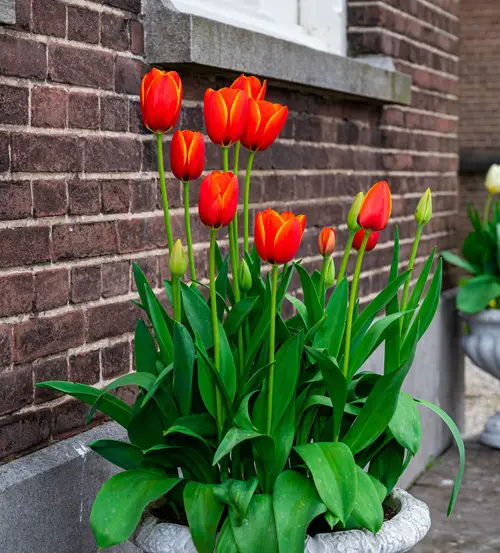
Botanical Name: Tulipa spp.
While the Dutch may have monopolized the Tulip story, the south of France boasts colorful cultivars such as the luscious pink Menton tulip, Apricot Beauty, and varieties of Scheepers. Originally imported from Turkey, they now thrive in Provence’s warm, sunny weather, drawing tourists and natives alike.
The long, slender stems of French tulips steadily support their bulbous blooms, which measure up to 6 inches. Some even wear a delicate fragrance. In spring, tulip fields are awash with a staggering array of colors, from soft pastels to striking hues of pink, white, purple, red, and yellow. They prefer well-drained, organic-rich soil and moderate watering.
9. Sunflower
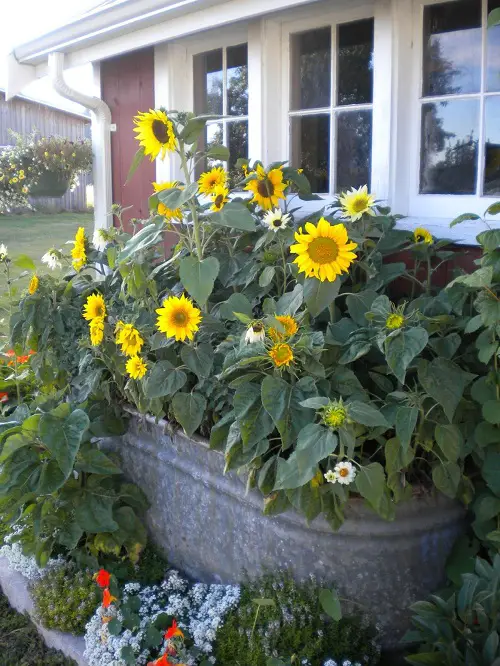
Botanical Name: Helianthus annuus
Symbolizing warmth and vitality, the sunflower is a definitive French bloom, adorning fields and gardens throughout the countryside. Made more French by Van Gogh’s paintings of sunflowers in Provence, France is Europe’s second-largest producer of this flower.
Blooming in summer months, sunflowers thrive in moist, organic-rich, slightly acidic to neutral soil. You can even grow sunflowers on your balcony.
10. Lilac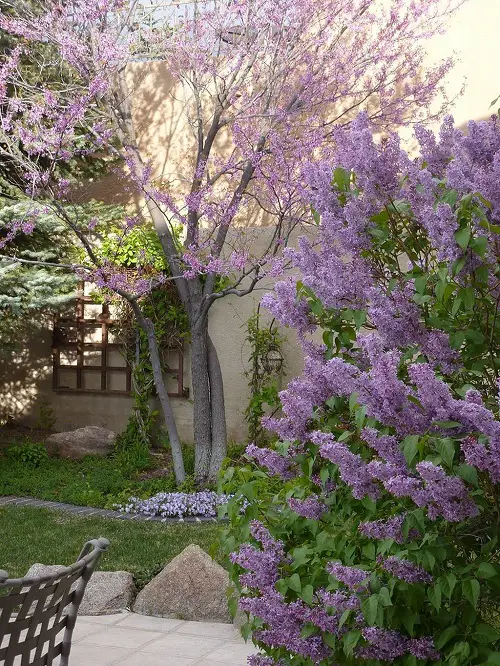
Botanical Name: Syringa vulgaris
The French cherish the sweet scent of these flowers so much that certain varieties are coined French lilacs due to their long bond with the country. Lilacs are hardy plants that can live up to 100 years, rewarding with soft shades of mauve, lavender, pink, and purple.
These shrubs are best planted in sunny spots and must be pruned right after flowering to ensure blooms return in the upcoming seasons.
11. Geraniums
Botanical Name: Pelargonium spp.
French geraniums are cultivars commonly associated with French gardening traditions. Varieties like Rozanne, Fernleaf, and Angel Eyes can be found popping out of window boxes and garden beds all over France. Flowering from spring to fall, French geraniums sometimes have fragrant foliage in shades of green and bronze and clusters of single and double blooms in red, pink, and white.
Once mature, French geraniums are relatively drought-tolerant. They thrive in full to partial sun and well-draining soil.
12. Daisy

Botanical Name: Bellis perennis
French daisies, often referred to as Marguerites after the French name, are actually the national flower of Holland. Varieties like the grass-leaved daisy and oxeye daisies are commonly found in French gardens, fountains, and public parks.
Resonating well with the French gardening ethos of combining aesthetics with practicality, the resilient Marguerite blooms profusely from late spring through fall and comes in white, yellow, and pink with dark centers. It thrives in well-draining soil with average fertility.
13. Hibiscus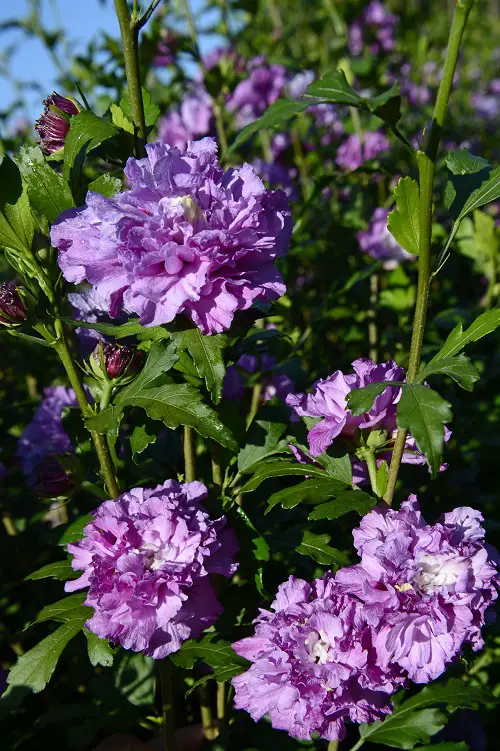
Botanical Name: Hibiscus spp.
Exotic varieties such as the blush pink French Cabaret, pure white Diana, and Blue Chiffon are grown in many regions in France. These tropical blooms thrive in warm Mediterranean weather and are often used in formal garden designs, public spaces, cottages, and French landscapes.
Hibiscus enjoys full sun, well-drained, rich soil, and regular watering. If grown in a frost-free climate, pruning these plants in late winter encourages steady blooms in the next growing season.
14. Clematis
Botanical Name: Clematis spp.
From meticulously manicured parterres to the traditional jardin à la française, a formal style of French landscaping, Clematis makes for a wonderful floral headliner in French garden designs. With over 380 species, most clematis varieties produce large, colorful blossoms. As climbers trend in French gardens, you’ll likely see clematis vines climbing over structures like arbors and trellises.
Until you decide to grow it or not, don’t miss out on beautiful ideas for using clematis in your garden.
15. Lily of the Valley
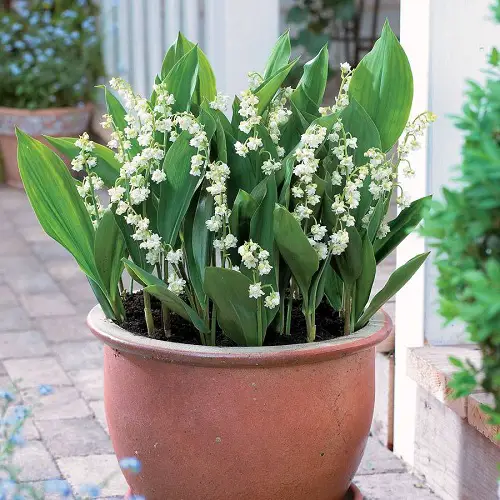
Botanical Name: Convallaria majalis
The French even celebrate Labor Day as La Fête du Muguet (Lily of the Valley Day) to welcome spring. With nodding white bell-shaped flowers, this woodland species is easy to grow and is sweetly fragrant. But be careful, as all parts of the plant are poisonous if ingested, especially for children and pets.
It grows well in mildly warm weather and prefers slightly alkaline soil.
16. Wisteria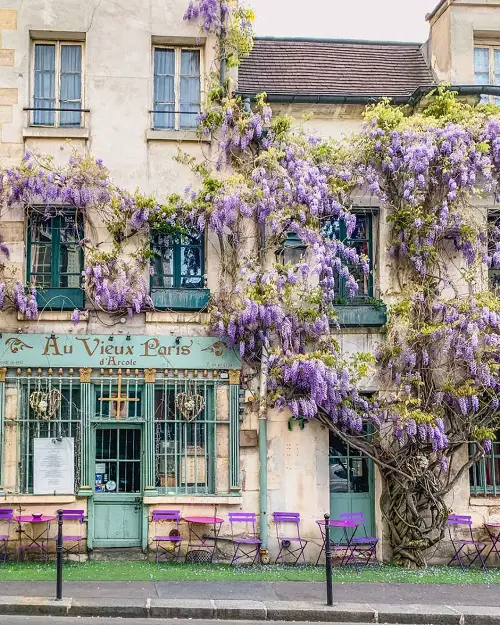
Botanical Name: Wisteria sinensis
Wisteria blooms are said to give Paris a makeover in summer and spring with their drooping clusters of white and mauve flowers. Found outside cozy Parisienne cafes, roadside railings, across the Seine River, and facing the Eiffel Tower, these blooms climb through every nook and corner of the city of romance.
To grow, plant them in fall in full sun and use trellises and arbors for support.
17. French Marigolds
Botanical Name: Tagetes patula
French marigolds are actually native to Mexico and Guatemala but get their name from their popularity in French gardens. These cheerful annuals bloom in shades of yellow, orange, and red throughout the summer. They also repel pests and contain medicinal properties, making them essential additions to a landscape, especially vegetable gardens.
While slightly more drought-tolerant than African marigolds, this variety also prefers full sun with partial shade and blooms about 8 weeks after planting.
18. French Hyacinths
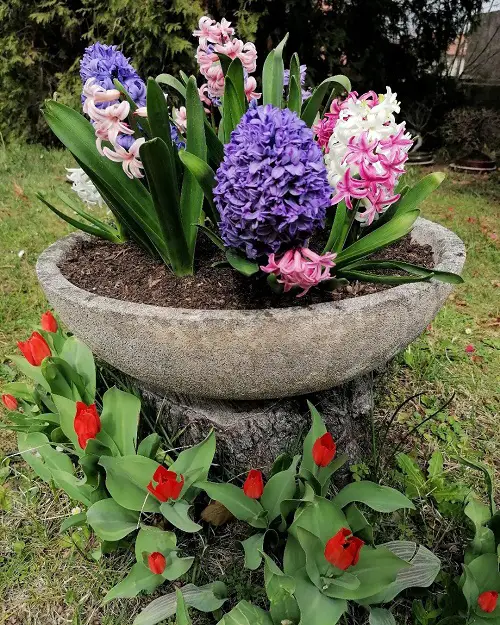
Botanical Name: Hyacinthus orientalis
Originating from regions of Turkey and Palestine, these fragrant and dramatic blooms are a sign of early spring in France. Emerging in the most brilliant shades of crimson, lilac, cream, yellow, and pink, each color has a unique fragrance, making it invaluable in perfumes.
Plant its bulbs in the fall for the best spring displays.
19. Chrysanthemums

Botanical Name: Chrysanthemum spp.
Surprisingly associated with death and, therefore, funerals, chrysanthemums are considered rude to gift on any other occasion in France. Also considered a symbol of immortality, you’ll find scores of these robust fall blooms in hues of purple, red, yellow, and pink decorating cemeteries and mausoleums on All Saints Day.
Planted in borders, containers, and flower beds, mums are known for their longevity. They prefer full sunlight and rich, well-drained soil.
What to Do with Potted Mums After Blooming
20. Nasturtiums
Botanical Name: Tropaeolum majus
These edible flowers were cherished for their beauty by the French since King Louis XIV planted them in the flower beds of the Palace of Versailles. Their name comes from the Latin nasus (nose) and tortus (twisted)—our exact expression upon inhaling their spicy scent!
This warm-season annual produces fiery red, yellow, and orange flowers within four to six weeks of planting. It is easy to grow and attracts bees and butterflies to the garden.
21. Pansy
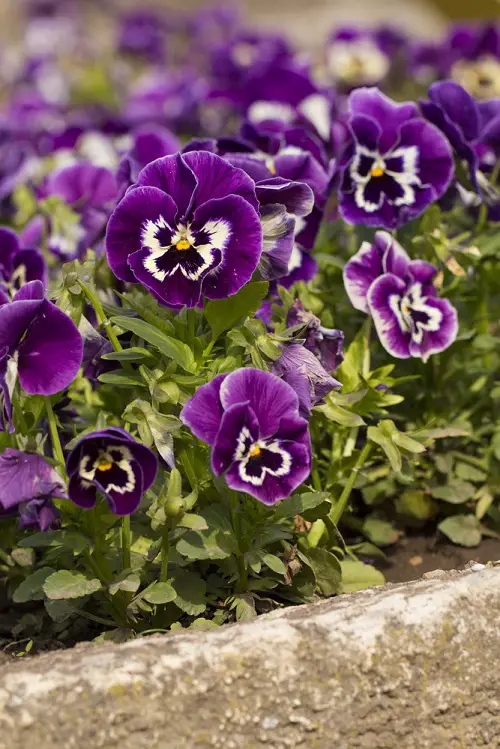
Botanical Name: Viola tricolor var. hortensis
Derived from the French word pensée (thought), the garden pansy is a hybrid flowering plant with large, face-like flowers in patterned shades of yellow, purple, blue, and white. Also known as violets, they bloom in spring, early summer, or fall, depending on the climate and cultivar.
22. Camellias
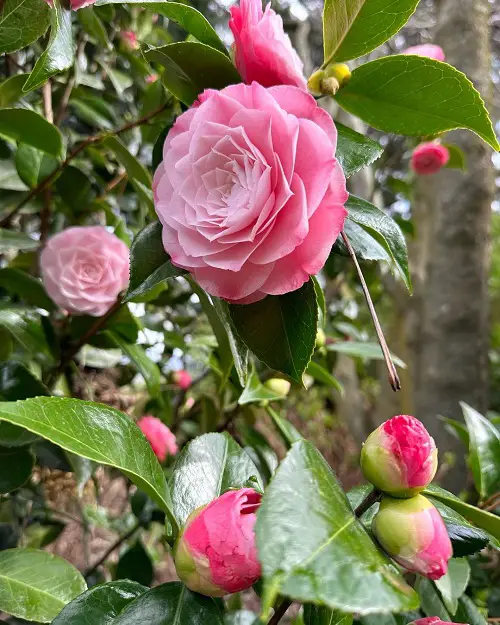
Botanical Name: Camellia sinensis
These glossy-leaved shrubs from the tea family produce abundant flowers in white, pink, and red. In France, they’re associated with love and commitment, making them popular choices for wedding bouquets.
Camellias grow best in the shade and need acidic soil to grow, with a pH of around 5.5 to 6.5.



Amazing read guys. However, I would appreciate if the descriptions were a bit more informative and longer, felt like the sections ended as I was getting into each flower. Also, please do a list of carnivorous plants and how to grow them on a terrace/balcony.
Thanks!